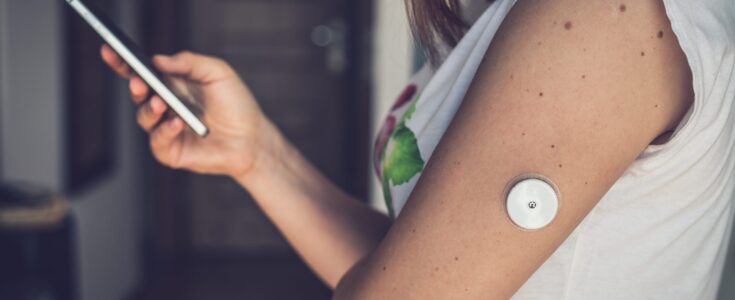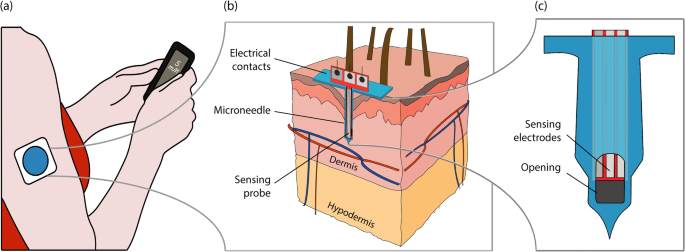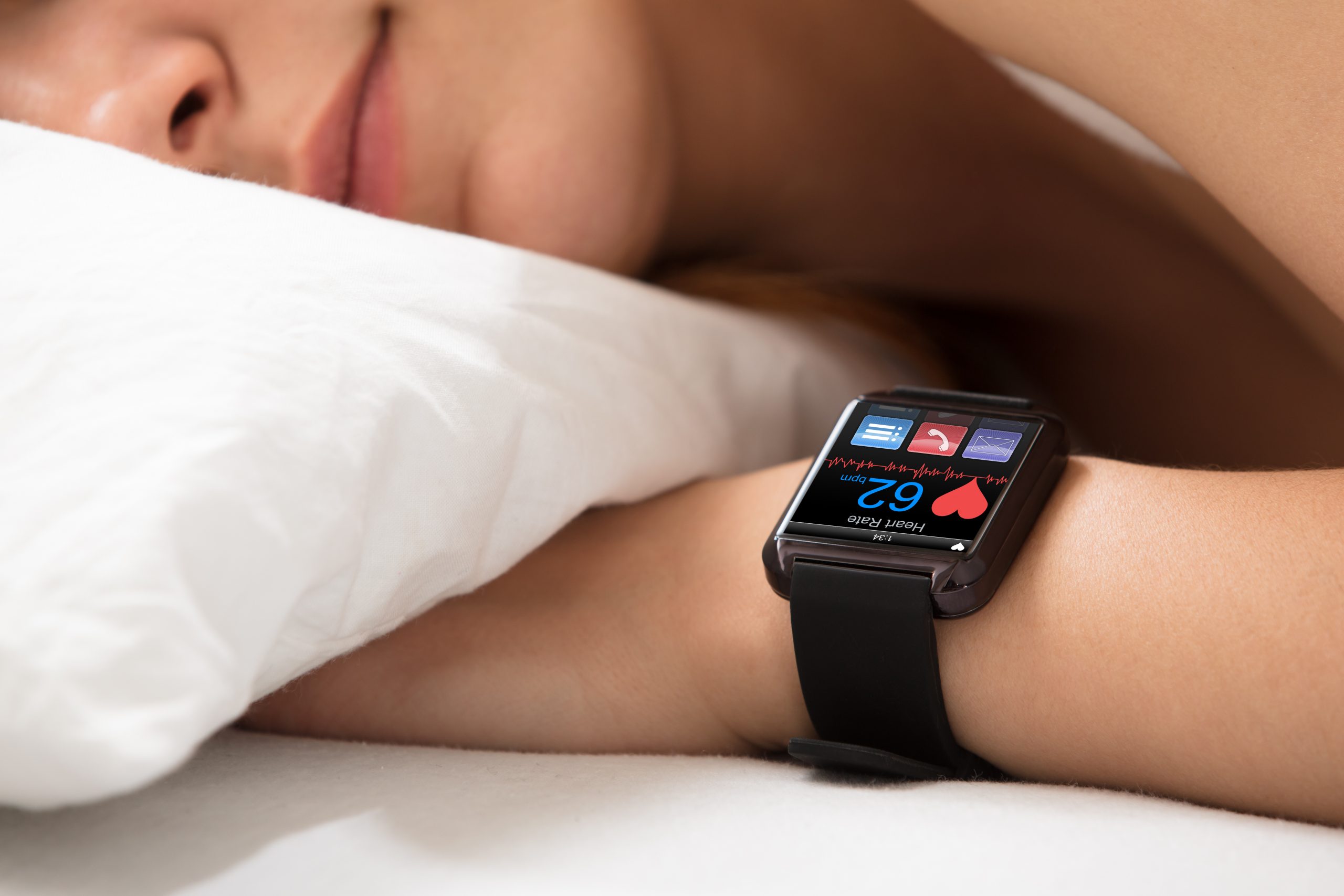

Sensor technologies have come a long way from using intricate machines in medical facilities to measure heart rate, blood glucose, and oxygen saturation to being able to measure this on your very own smartwatch. While the focus has always been medical accurateness, we have always looked for alternatives that are more affordable and convenient. Therefore, we are seeing a trend toward wearable devices for health monitoring. This process of shrinking technology to become more portable and compatible with our everyday lives is called miniaturization.
Despite the recent popularity of fitness bands and smart watches, wearable technology has actually been around for about 700 years—surprising, but true!
From the eyeglass, which was the very first wearable device and developed in 1286, through the Abacus Ring in 1600 and the Roulette Shoe in 1961, to the Apple Watch in 2014 and the Oculus Rift in 2015, wearable technology has come a long way and has undergone several improvements and re-inventions.
Many hours and lots of funding are being poured into continued research of wearable health trackers. We are seeing technology that used to be exclusive to doctors’ offices become available to the general public.
In the past, individuals with diabetes had to pay a visit to their physician to measure their blood glucose levels. Now, they can use a simple handheld device or even a sensor implanted in their arm to stay continuously aware of their glucose levels.
While wearable devices can be used for many things, they largely fall into two categories:

Medical wearable devices are the devices that directly support the medical practitioner in monitoring and treating a patient. All these devices have to go through a mandatory FDA approval before market. Most of these devices require medical prescription from a doctor before use.
The CGM would be a good example of a medical device. Through miniaturization and advancements made in the field of biosensors, it was possible to implant a sensor inside the arm of a patient and have it connected with their personal phone.
ECG functionality is one of the most significant health features of today’s smartwatches. An ECG is a medical-grade procedure for detecting cardiac activity and screening for any abnormalities. ECGs are also referred to as “electrocardiograms” or “EKGs.” An ECG taken at a hospital provides a more detailed reading, but the benefit of attaching similar technology to a smartwatch is that the user can take an ECG anytime they want and then send the data to their doctor.
Patients can use ECG sensors that allow self-testing, automatic interpretation of test results, and enable sharing of the reports with practitioners 24×7. Apple Watch Series 7 with ECG tracking, FitBit Sense, IBM Heartbit chest trap, and XOSS wireless are some popular ECG trackers.
One of the most fascinating inventions that the miniaturization of technology has brought to us is the digital pills. These are the sensors that can be consumed through the mouth. These pills are used primarily for imaging, monitoring medication, gas sensing, and electrochemical gas sensing.
Once the patient consumes a digital pill, it gets activated by the stomach acid and generates electrical signals. The signals are picked up by a patch that is worn on the ribcage. The information is then transmitted to a smartphone for further analysis.
There are also devices used for the treatment of certain abnormal medical conditions. Essential tremor is an uncontrollable and rhythmic shaking condition of the nerve system. It primarily affects the hands, especially while performing simple actions like sipping from a glass or tying shoelaces. A possible remedy is using a therapy wristband.
Cala Trio is one example of a wristband that offers a non-invasive neuromodulation therapy delivered to patients directly via physiological sensors for treating tremors. The device calibrates to the individual tremor patterns and gives patients control over them through nerve stimulations that disrupt tremulous activities. Pacific Neuroscience Institute reports that for people with ET, “wearing a wrist band just a couple of times a day to help control tremor appears to be a prospect that patients are excited about.”
Another interesting technology that researchers have come up with is the bionic eye. It’s a brain-controlled artificial eye that sends visual signals back to the brain. It consists of image sensors, microprocessors, receivers, radio transmitters, and retinal chips in electronic systems. This technique aids in the restoration of vision in the blind.
Fitness wearable devices are also utilized in healthcare; however, they are primarily employed for wellness. These devices may not require FDA approval before market.
The most common examples of this are fitness bands and smartwatches. These are used to keep track of various vitals including heart rate, temperature, oxygen saturation, stress levels, and more. While a few years ago these tasks would have needed different devices, this health data can now be gathered right from a person’s wrist.

An intriguing technology that researchers have worked on is the smart tattoo. Smart tattoo is a technology platform that combines electronic components for sensing, medical diagnostics, communications, and human machine interfaces on an ultra-thin, skin-like patch that adheres to the skin with the ease, flexibility, and comfort of a temporary tattoo. They can track and display information about the wearer. For example, the tattoos can display your body temperature by adding thermochromic displays that change colour in response to heat.
Smart clothing is something that is gaining a lot of attention. For example, there are yoga pants that will tell you how to do yoga. These pants are covered in accelerometers to detect its orientation. It also has vibration mechanism to help you get to the right pose.
With these increasing number of medical and wellness devices, it is important to note the challenges technology miniaturization is facing. Sometimes there is a consensus that these devices are just a gimmick and not producing accurate results, and that this novelty will soon wear off.
But there is evidence to disprove those suspicions. The FDA has started recognizing these devices and classifying them into distinct types. Therefore, the original equipment manufacturer must continually improve the reliability, stability, and usability of these devices.
And with the advent of 5G connectivity, these medical devices have a bright future. A faster connection would amount to faster throughputs, allowing this data to run through ML/AI algorithms for analysis of the data.
Wearable devices improve healthcare capabilities significantly by bringing practitioners close to patients and giving them a real-time view of their conditions. However, testing with wearables also has its fair share of challenges. For instance, for the purpose of regular monitoring, wearables require long battery life which is difficult to achieve considering their miniature size that can only accommodate a single-cell Li-Ion battery. Another major challenge is connectivity. Most wearable devices are connected using Bluetooth and the connection needs to be established without draining the device’s energy which is difficult to achieve. This consideration can also add throughput limitations. Moreover, with AI/ML data processing, the limitations of the computational power of wearables add to these concerns.
The miniaturization of sensor technology has ushered in an era of wearable devices. These medical and fitness wearable devices have made it easy to monitor our health without the inconvenience of doctor appointments. Paired with the affordable devices, the number of medical wearable devices are soon to cross the 1 billion mark in 2022. Albeit there are still some kinks with the miniature sensor technology, it is still positively impacting entire communities of care as well as society as a whole.
The immense amount of medical data captured by wearable devices can be very useful if handled properly. Even generic heart rate data when passed through a machine learning algorithm can predict diseases in early stages or even before they occur. Soon your smart T-shirt will be able to tell you that you need to visit a doctor before you can even feel any symptoms. A healthier future is possible with the help of wearable devices.
Apexon helps MedTech companies launch connected and compliance devices faster with less risk. To learn more, please visit Apexon’s Connected Medical Devices Services page or get in touch directly using the form below.
The future of wearable technology in healthcare holds immense promise, revolutionizing how individuals monitor and manage their health. Here’s what we anticipate:
Advantages:
Disadvantages: